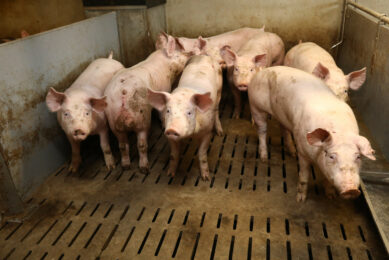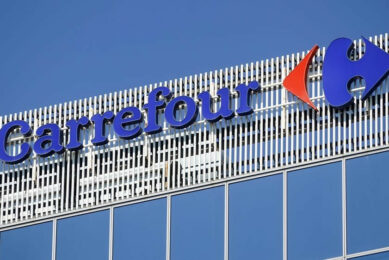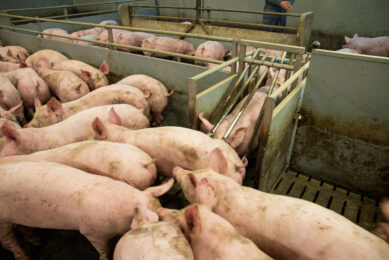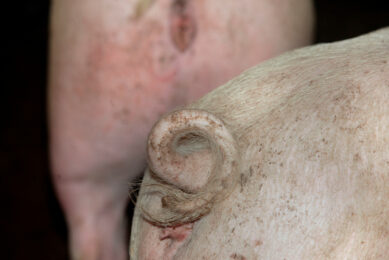Review SPACE: Attention for environment and welfare
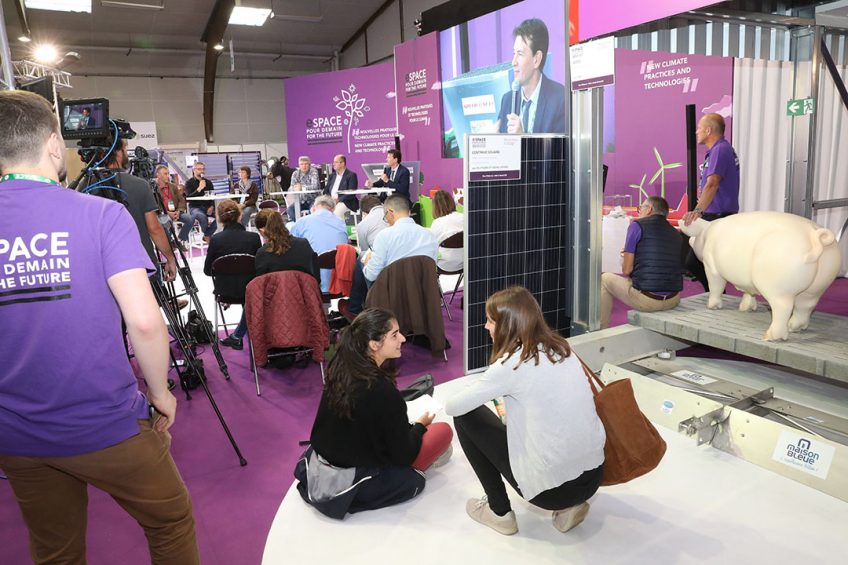
A reduced environmental pressure has been one of the major points of attention at the agricultural trade show SPACE, in Rennes, France. The attention for this subject was visible throughout the chain.
Efficient production with minimal environmental impact – that was the key theme of the international agricultural trade show SPACE, held 10-13 September, in Rennes, France. Quite a few of the 1,400 exhibitors showcased products to highlight that trend. One of them is the Cooperl cooperative created a ‘pig passport’, thus laying a basis for less environmentally challenging production. The cooperative has been working on this project for about a year now. Annually, Cooperl is processing now 500,000 pigs that were given a digital ear tag after birth.
Digital ear tag for pigs: a treasure trove
The digital ear tag will provide a treasure trove of information to produce more efficiently in the near future, with as few antibiotics as possible, explained Cooperl’s Thibault de la Motte. Previously, not much was known about a pig as soon as it was weaned, as then all pigs will get mixed. Adding a digital ear tag it becomes clear which animals have the sow and terminal sire, for instance. In addition, things like slaughter age, antibiotic treatments and pig house section become visible. Inside the pig house there have been antennas registering when an animal is being moved. In addition, also large groups of pigs can be identified using the antennas and digital ear tags.

For the time being, the passport is only used by pig farmers producing for Cooperl’s antibiotic free pig concept. Every year, the cooperative is slaughtering roughly 2.5 million pigs that were reared without the usage of antibiotics. One part has not had antibiotics throughout their lives, the other part has been free from antibiotics after weaning.
Recognisability at the slaughter plant
Of the pigs having a digital passport, between 85-90% is being recognised at the slaughterplant. Sometimes pigs lose their ear tag during their life or when scalding. The cooperative hopes to be at 95% in about 6 months from now.

Data yielded in the pig passport project are very interesting for all parts of the pig chain, Mr De la Motte explained. The data will help the breeding sector, the feed industry, the slaughterhouses and of course of the pig producers themselves as they can produce more efficiently. It will be the pig producer who will have to invest in the ear tags.
Choice introduces new sow line
It was not only Cooperl that was investing in more environmentally friendly and more animal friendly production. Global genetics company Choice launched a new sow line at SPACE, called the CG36. This is a crossbreed of the Landrace and Large White lines.

The company’s motto is ‘Caring for life’, which is aimed at achieving more vital piglets and lower mortality figures. Sows will have at least 14 good teats. Of the pure line sows, which will form the basis for the CG36 sow, the number of liveborn piglets will grow, although the average birth weight does not come down. Piglets from pure line sows are 1.4kg at birth. Total litter weight has grown by 2kg over the last 4 years, to be 21kg in total.
‘Caring for life’, also focuses on care for the environment and a better economical situation for pig producers. After all, money needs to be made.
Pig pens adjustable in size
Another focus of attention at SPACE was the ‘roll-up’ pig house by livestock equipment company Asserva. The company showcased pig pens which are adjustable in size. Should no caretaker be present, then the aisle can easily be added to the pen, as the floor is flexible. This allows for 7-10% more space.

The solution emerged as living space is an issue for many pig farms. Due to growing automisation, the pig producer does not have to be in between his animals very frequently, so very regular control check ups are a thing of the past. By the end of this year there will be a trial involving a ‘roll up’ pig pen, including 9 farrowing pens.
LED lighting with variable colours
Another novelty included a variable type of LED lighting, which can vary in light volume as well as temperature. This was introduced by livestock equipment company Calipro, subsidiary of Cooperl. By adding more yellow tones to the light, the temperature will increase the temperature. This will make the animals more relaxed, like is preferable in piglets or finishing pigs.

Having a whiter shade of light on the other hand will make the animals more active; this is achieved by adding more tones of blue. This type of lighting is more suitable for broilers or sows in farrowing or lactation pens. In case of different genetics or different animal groups are being kept in the room, the type of light is easily adjustable to the animals.
In the section there is a system measuring the light volume throughout the day. The dimmable light measures 1.8m and the colour temperature can be adjusted between 2,200K until 6,500K. With a switch up to a maximum of 1,000 lights can be monitored all at once.



